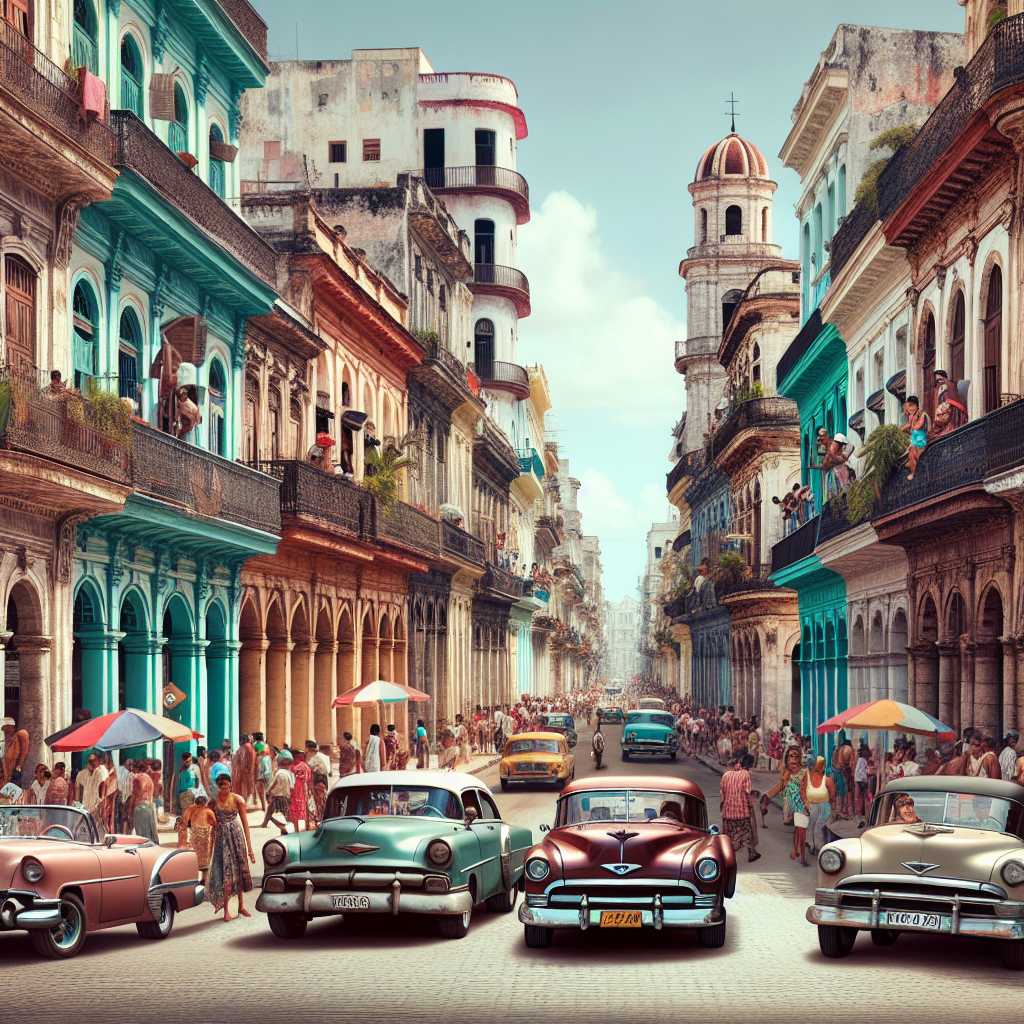Understanding Cuba: An Overview of Its History, Culture, and Current Political Landscape
The Republic of Cuba has been a significant player on the global stage for more than half a century, largely due to its socialist revolution, its relationship with the Soviet Union during the Cold War, and the consequent strained relationship with the United States. Nestled in the northern Caribbean at the confluence of the Caribbean Sea, the Gulf of Mexico, and the Atlantic Ocean, this archipelago encapsulates vibrant history, unique culture, economic challenges, and a contentious political landscape.
Cuba’s Rich Historical Tapestry
Cuba’s history dates back centuries with the indigenous Taíno people who inhabited the islands before Spanish colonization in the 15th century. Following Christopher Columbus’s arrival in 1492, Cuba became a springboard for Spanish expeditions to the American continent. Over centuries, it was transformed by European colonization, African slavery brought through the transatlantic slave trade and mingling with indigenous peoples.
The struggle for independence in the 19th century featured heroes like José Martí. However, following independence from Spain in 1898 after several wars, Cuba found itself under considerable U.S. influence for several decades. Matters changed drastically on January 1, 1959, when Fidel Castro’s 26th of July Movement toppled the government of President Fulgencio Batista. The Cuban Revolution introduced socialist reforms and aligned Cuba closely with the Soviet Union.
Culture: A Melting Pot of Influences
Cuban culture is a colorful amalgamation of different influences, reflecting its history of colonization, trade, and immigration. African influences are particularly seen in music and religion—a result of the large African slave population brought to work on sugar plantations—and is pivotal in Cuban music genres such as son Cubano, salsa, and rumba.
Spanish colonial heritage is evident in architecture, ranging from grand plazas and cathedrals to colorful colonial homes that line the streets of Old Havana, now a UNESCO World Heritage site. Moreover, the revolutionary period left its mark too; from iconic propaganda art to the fostering of a strong identity around resistance and independence.
The Island’s Political Evolution
Following the successful revolution of 1959 where Fidel Castro came to power promoting a Marxist-Leninist model of socialism, Cuba saw radical reforms including nationalizing industry and collectivizing agriculture. The U.S.’s response—embargoes and diplomatic isolation, including an unsuccessful invasion attrunpt known as the Bay of Pigs in 1961—cemented Cuba’s place as a flashpoint of Cold War tensions.
Even beyond Soviet ties exemplified by events such as the 1962 Cuban Missile Crisis, domestic policies made profound changes to education access and healthcare services but often at a cost: free speech and political dissidence were stifled.
The fall of the Soviet Union brought an end to considerable financial support, ushering in a period of severe economic crisis known as the “Special Period” during which Cubans faced great hardships. These substantial changes introduced cautious economic liberalization reminiscent of China’s opening under Deng Xiaoping.
In the 21st century Cuba’s leadership moved from Fidel Castro to his brother Raúl Castro and then Miguel Díaz-Canel. Despite these shifts, Cuban socialism persists amid an ongoing U.S. embargo and continued challenges in upgrading its state-run economic model.
Economic Challenges and Opportunities
Cuba’s economy is one marked both by struggle and potential most importantly in tourism. Since the early 1990s tourism has boomed becoming one of the most important sectors. However, reliance on imports for food and fuel creates vulnerability along with disparities emerging partly from remittances which form part of citizens’ incomes.
Economic embargoes imposed by various U.S. administrations have brought hardship but have also necessitated innovation; biotechnology has been one thriving area despite restrictions presenting barriers to international trade and finance would underscore.
Notes
Image Description
A bustling street scene in Old Havana captures colonial buildings painted in pastel colors alongside classic American cars from the 1950s – symbols of Cuba’s unique history and culture.population

